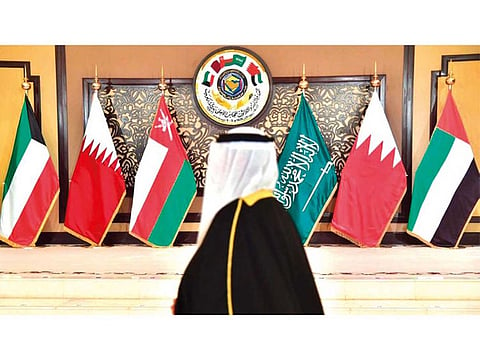GCC’s relations with Iran in for a reset – and economic gains will be many
There could even be a sharp scaling up of two-way investment flows

Historically, India and Iran have been the GCC’s main trading partners, with the two making up a majority of imports, particularly for food commodities, for decades. India and Iran also attracted most of the GCC visitors, including medical tourism.
The GCC’s relations with India and Iran continued to grow until the end of the 1970s. Since then, this has taken different paths, and their importance to the GCC diverged.
India wisely absorbed the GCC countries’ growing economic importance and took constructive steps to develop deeper relations with them. It has placed India alongside China as the top trading partners for these economies.
Rapid deterioration in ties
On the other hand, events in Iran at the end of the 1970s contributed to a significant deterioration in its economic and trade relations with the Gulf. As a result, trade declined as did tourist numbers, which has come to a halt at various times, resulting in significant losses for Iran’s businesses and the wider. GCC countries easily found alternatives for their imports from Iran.
The Gulf-Iran relations are now experiencing dramatic and rapid changes, with encouraging intentions on both sides. In fact, there is no better school to learn from than history. No one has benefited from tensions and conflicts over the last 40 years, and no one has been - or will be - able to change geographic borders, demographic or ethnic structures.
If demographic and ethnic structures are balanced, there will be enormous opportunities for the development of bilateral and collective cooperation.
Amid serious global tensions, the GCC region received the good news of a bilateral agreement reached by Saudi Arabia and Iran, which was brokered by China. This was followed by a visit to the UAE by Ali Shamkhani, Secretary of Iran’s Supreme National Security Council, and a meeting between the head of the Iranian parliamentary delegation and high-level officials in Bahrain.
A true breakthrough
Statements by GCC and Iranian officials highlight the importance of economic, trade, and investment cooperation in the ongoing rounds of talks between the sides. Regarding Saudi-Iran agreement, Sheikh Tahnoun bin Zayed Al Nahyan, UAE’s National Security Advisor, said: “This agreement plays a constructive role in expanding peace, stability and sustainable security in the region,”, and adding that ‘developing friendly and brotherly relations between Abu Dhabi and Tehran is among the UAE’s priorities’.
Ali Shamkhani highlighted that ‘cooperation and rapprochement must replace differences and hostility’. The composition of the delegations participating in the talks, which included the governor of Iran’s Central Bank, demonstrated that economic and investment issues took centrestage in the talks.
Meanwhile, Saudi Finance Minister Mohammed Al Jadaan said: “There are a lot of opportunities for Saudi investments in Iran that could happen very quickly.”
Consequently, both sides have positive intentions to overcome the negatives of the previous period and its ramifications, which missed important investment opportunities and constructive economic cooperation and resulted in cumulative losses over years.
There are genuine opportunities to move to a new phase of cooperation, good neighborliness and respect for each side’s options and domestic policies, which is one of the foundations required to build trust. Finding solutions to pending issues will take time to find the appropriate ground for developing bilateral cooperation in all fields, particularly on the economy.
Gains extend across regions
Developing economic cooperation will have positives for the rest of the Middle East and the Indian subcontinent. This means that, for one simple reason, building trust between the parties will come before economic cooperation and investment prospects. Investment and economic development are impossible without a stable environment free of tension and mistrust.
If the new approach is successful, the world will witness a prosperous Gulf on its both sides, where peoples are provided with opportunities, optimum living standards and sustainable development.
Sign up for the Daily Briefing
Get the latest news and updates straight to your inbox

